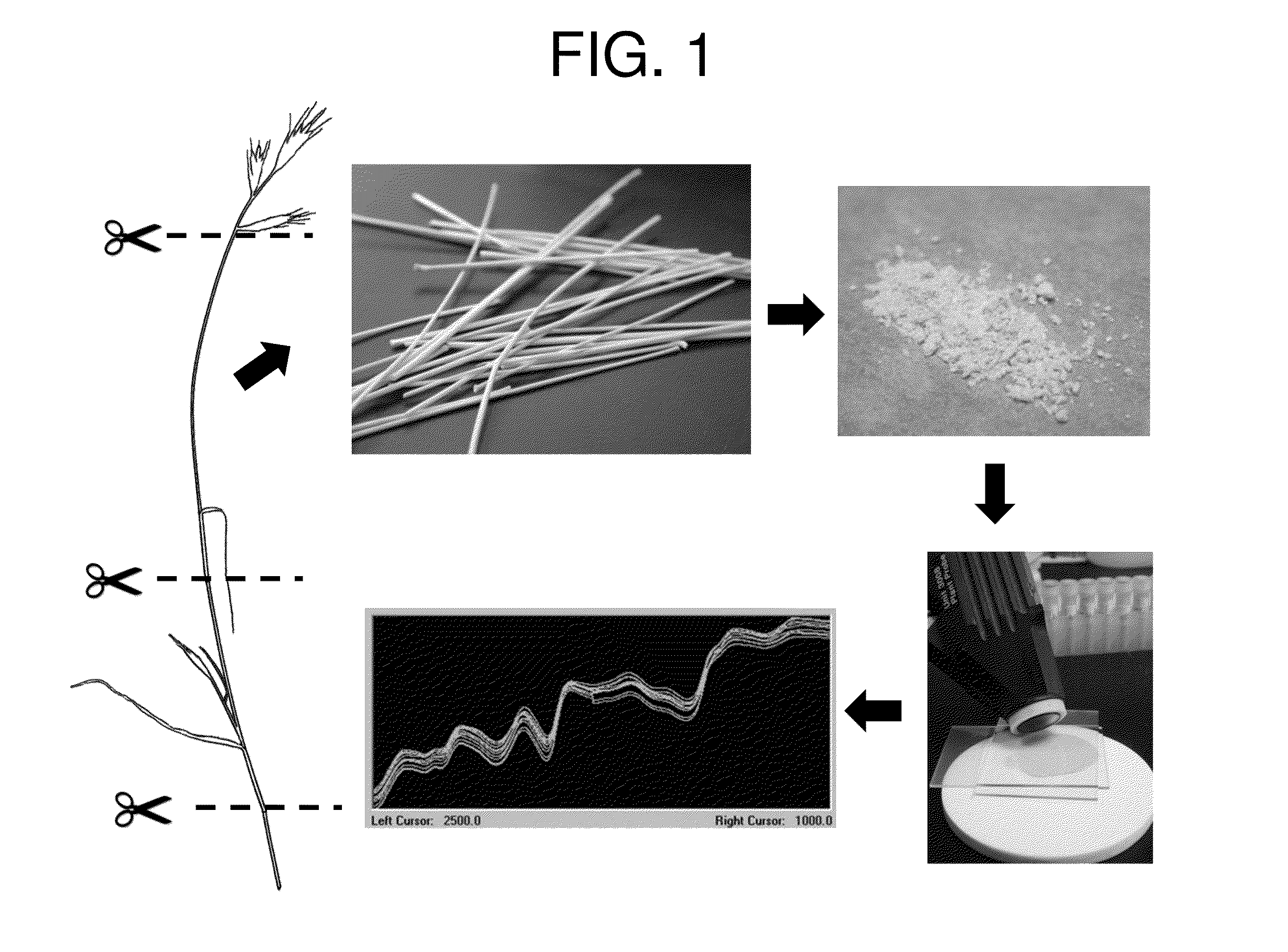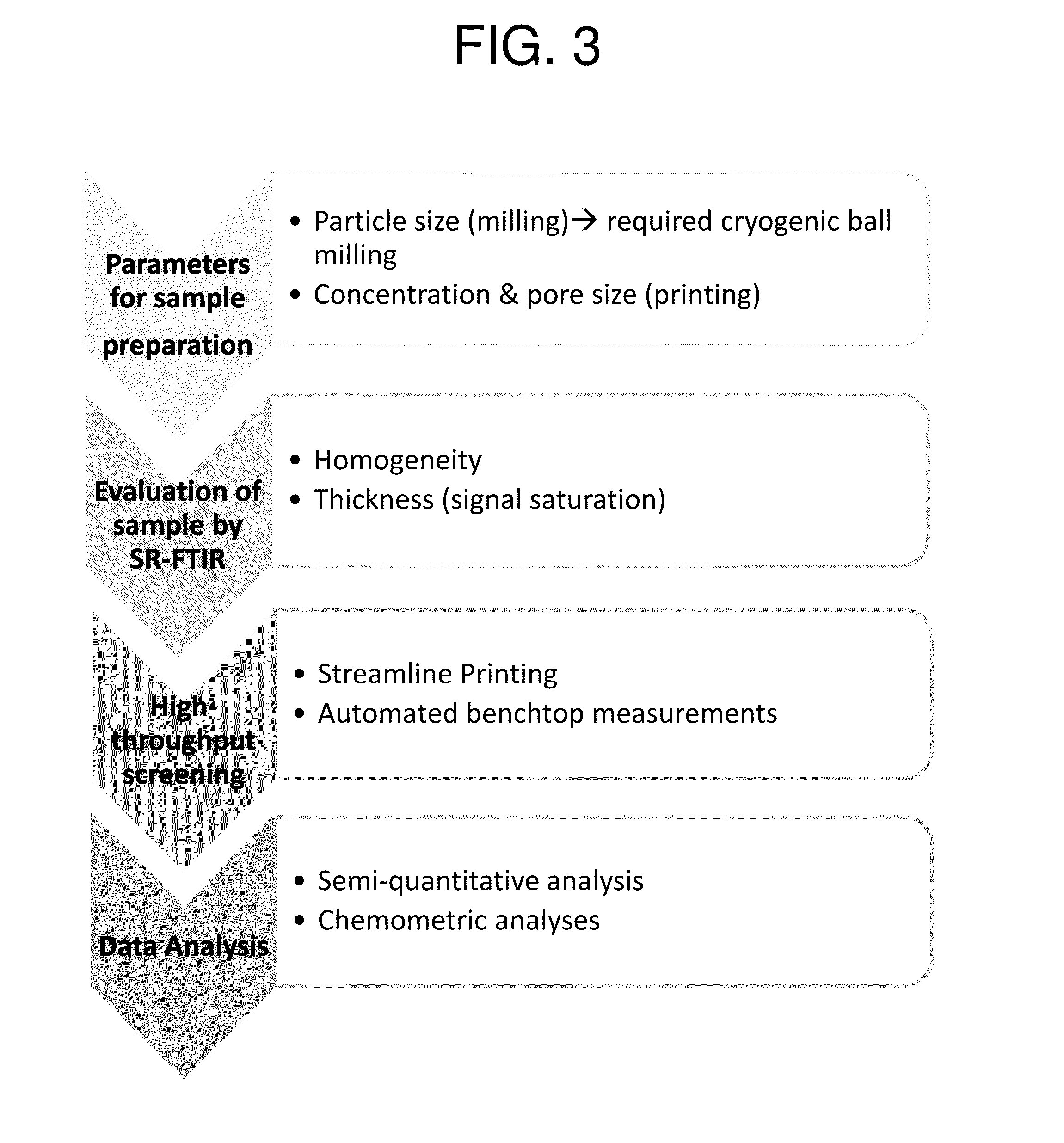Multiplex chemotyping microarray (MCM) system and methods
- Summary
- Abstract
- Description
- Claims
- Application Information
AI Technical Summary
Benefits of technology
Problems solved by technology
Method used
Image
Examples
example 1
Fabrication of the Printing Head
[0070]Construction of Photomasks for the Fabrication of the Printing Head.
[0071]To make the photomask #1 (FIG. 5A), we use a conventional photomask approach to define the UV-exposed area which will be the reservoir area (FIG. 6c) of the printing head (FIGS. 6b and 6c). To make the photomask #2 (FIG. 5A), we used a conventional photomask approach to define the UV-exposed area which will be the pores (FIG. 6a) of the printing head.
[0072]Fabrication of Printing Heads for Printing Bioenergy Crop Samples. Step #1:
[0073]A piranha cleaned silicon wafer is used for the fabrication of a printing head (FIG. 5C). We typically use wafers of 4- or 6-inch diameter with 500-600 μm thickness. A low-stress silicon nitride film of 100-400 nm thickness is deposited on the front and the back sides (FIG. 6c) of the wafer. A typical deposition process such as the Low-Pressure Chemical Vapor Deposition (LPCVD) is used.
[0074]Step #2:
[0075]The front side and the back side of ...
example 2
Preparation and Printing of Bioenergy Crop Particle Suspension
[0090]Procedure Development and Demonstration:
[0091]High-throughput screening protocol of model bioenergy crop brachypodium is illustrated in FIG. 3. Optimal parameters for brachypodium printing such as the milling / grounding parameters (speed, temperature, duration, vessel materials), carrier fluids / solids, concentration of brachypodium in carrier fluid or solid or mixture of fluid and solid), and pore size of the printing head are identified by infrared spectroscopy of the printed patterns. In this demonstration, we used broad-band synchrotron infrared spectroscopic measurement to evaluate the homogeneity and dimensions of the patterns. The evaluation / optimization was recursively iterated by changing the input parameters until the outcome meets pre-determined criteria. For example, the parameters found for brachypodium powders include concentrations between 5 and 10% of plant cell wall materials, particle size of milled / ...
example 3
[0113]Another example of a high-throughput screening of biomolecules is illustrated the results shown in FIGS. 14A and 14B. Very little sample preparation for protein printing is required as the protein is suspended in a buffer and thus able to be printed.
[0114]Referring to FIG. 8, the evaluation / optimization is recursively iterated by changing the input parameters until the outcome meets pre-determined criteria. After optimization of the parameters, high-throughput printing of Bovine Serum Albumin (BSA) is performed. In this example, this method is used to build a calibration curve for High-throughput screening protocol for BSA quantification using vibrational spectroscopy, see FIG. 15 for details. Using this technique, picograms of protein can be quantified.
PUM
 Login to View More
Login to View More Abstract
Description
Claims
Application Information
 Login to View More
Login to View More - R&D
- Intellectual Property
- Life Sciences
- Materials
- Tech Scout
- Unparalleled Data Quality
- Higher Quality Content
- 60% Fewer Hallucinations
Browse by: Latest US Patents, China's latest patents, Technical Efficacy Thesaurus, Application Domain, Technology Topic, Popular Technical Reports.
© 2025 PatSnap. All rights reserved.Legal|Privacy policy|Modern Slavery Act Transparency Statement|Sitemap|About US| Contact US: help@patsnap.com



